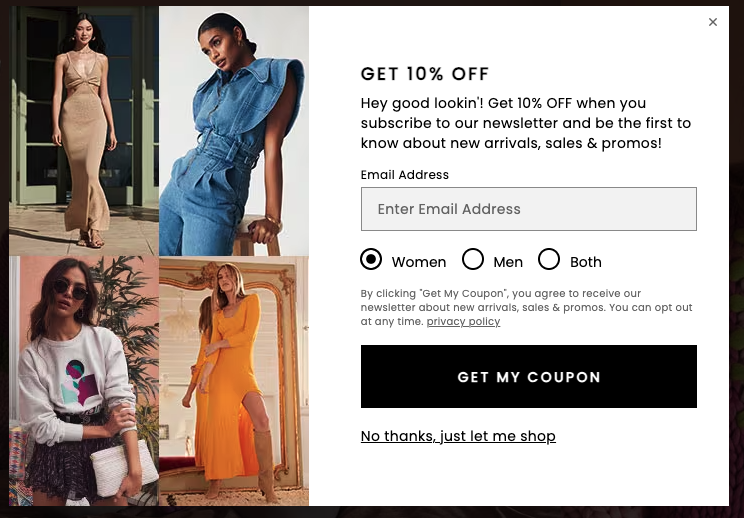
When to Use Long-Form vs. Short-Form Content
In today’s digital era, content is king. Put simply, content is the use of words, images, or sounds to convey information and ideas. Web pages, blog posts and articles, social media posts, ebooks, infographics… these are all examples of content!
All kinds of companies incorporate content into their marketing strategy, from small businesses to massive corporations. As a result, talented content writers are always in demand. Their job is to provide engaging, informative content that helps businesses reach their goals (be that increasing sales, building trust and brand recognition, or boosting website traffic).
This is where a long-standing debate comes in – what is most effective, long-form or short-form content? Well, it depends! Each type of content has its pros and cons. In this post, we will:
- Define long- and short-form content
- Provide examples of each type of content
- Explore why each example is effective
Whatever type of content you write, this post is sure to provide you with some valuable insights.
What Is Long-Form Content?
Long-form content is typically anything over 1,000 words (although definitions vary). This type of content is designed to provide in-depth coverage of a topic, or answer a specific question in detail.
Examples of long-form content include:
- Comprehensive blog posts
- Detailed guides and tutorials
- Listicles
- Q&As
- Pillar pages
- Evergreen content
- Ebooks
- White papers
It might seem counterintuitive to write over 1,000 words in a world where attention spans are seemingly shrinking. However, well-written long-form content is always designed with a particular target audience in mind. The content is tailored to resonate with that audience and provide them with the insights and resources they’ll find most valuable. This makes it highly engaging, despite the longer length.
The longer a reader is engaged with your content, the more likely they are to convert (i.e., complete a desired action like signing up for something or making a purchase). As a writer, you can optimize your long-form content for conversion by:
- Crafting attention-grabbing headings and subheadings
- Addressing the audience’s pain points or desires in the introduction
- Having a clear structure, with easy-to-skim content like bullet points or lists
- Including data or statistics from credible sources
- Adding real-life examples and case studies
- Incorporating calls to action
- Integrating internal links to other useful webpages
Even if a reader doesn’t convert right away, long-form content has lots of benefits. It can help a brand establish its subject-matter expertise, build brand awareness, and generate leads for the future.
Examples of Long-Form Content
Next, we’re going to share a few examples of long-form content and explain what makes them work.
Example 1: Listicle
Our first example is a listicle style blog post from the fashion and lifestyle magazine Vogue: 7 Tips on Starting (and Keeping!) a Healthy Habit.
This type of long-form content is effective for several reasons.
Firstly, the title lets the reader know exactly what to expect from the piece of content. It will address one of their concerns (how to form healthy habits) within a concise framework (of seven steps), in a format that is designed to be easy to read and digest. This empowers the reader to take practical steps toward enhancing their well-being, without feeling overwhelmed by information. The idea that it takes fewer than 10 steps to create a better life is bound to be appealing!
Secondly, while the listicle itself is relatively concise, the content is peppered with internal links to further reading. This allows the writer to add extra value to the content, without distracting the reader from the topic at hand. Should the reader wish to find out more, extra content (and therefore value) is just a click away. Similarly, there are links to related articles at the bottom of the blog post, this time presented with visual tiles. This is a great way to catch the reader’s attention as they come to the end of the listicle, and hopefully keep them on the website longer.
As well as being useful for the reader, internal links are great for SEO. Internal linking helps establish a clear hierarchy and structure to all of the content on a website. This makes it easier for Google to find and understand the content, and more likely that it will rank the content highly in search results. Higher rankings in search results mean more organic traffic, greater brand visibility, more leads, and (hopefully) more conversions!
Example 2: Pillar Page
Our second example is the Beginner’s Guide to SEO from SEO software provider, Moz.
The guide is a pillar page – a content “hub” that covers all aspects of a particular topic. Pillar pages don’t go into great depth on any one aspect of a topic, but rather provide a thorough overview. The content is then linked to other internal web pages that go into more detail on a particular aspect of the topic. In this case, Moz presents seven detailed chapters covering everything a beginner needs to know about SEO. Each chapter is filled with information and links to further reading.
Moz provides the reader with a huge amount of value for free. This allows them to build an audience, and establish themselves as an authority on SEO best practices, without asking for an immediate commitment to purchase their SEO tools. However, if the reader does decide they want to purchase SEO tools or gain an SEO certification, Moz is likely to be at the front of their mind.
Example 3: Evergreen Content
Our third example comes from our own blog: The Ultimate Glossary of Proofreading and Editing Terms.
This blog post is an example of evergreen content. Evergreen content is any content that is likely to remain valuable and relevant to readers over a long period of time.
Glossaries are a great example of evergreen content. They are comprehensive and informative, and can be updated quickly. The information within them is very unlikely to go out of date (industry-specific terms don’t change frequently), and will always be valuable to industry newcomers and experienced readers alike. Ultimately, no matter what stage someone is at in their career, glossaries can help them to improve their knowledge and understanding of their industry and communicate more effectively with peers and clients.
Glossaries can also be good for generating backlinks. Lots of websites reference definitions of terms, and your glossary could become the landing page they link to. They are also a valuable tool for SEO, helping a website establish topical relevance and rank for industry keywords.
What Is Short-Form Content?
Short-form content is generally considered to be anything under 1,000 words (but can be as little as a few words).
Short-form content is any content that is simple, concise, and doesn’t take long to consume. If you want to communicate a message quickly, and capture the attention of users with limited time or attention spans, short-form content is the way to go.
Short-form content includes:
- Short-form blog posts
- Digital and print advertisements (including billboards)
- Short emails
- Social media posts
- Infographics
- Short videos
- News articles
Short-form is best suited for sharing news and updates, and promoting products or services in a quick and easy-to-consume way. It’s especially well-suited to mobile users, who tend to appreciate visual, shareable content.
Examples of Short-Form Content
Here are just a few examples of short-form content and what makes them effective.
Example 1: Social Media Post
Our first example of short-form content is an X (formerly Twitter) post from the language education app Duolingo.

The online space is highly competitive, and audiences are bombarded with huge amounts of content every day. On X alone, at least 500 million tweets are sent on a daily basis! As a result, businesses must always search for innovative ways to stand out from their competitors and connect with their audience.
One way some brands do this is by taking part in popular trends and using memes. In this example, Duolingo jumped on the “Roman Empire” meme first popularized on TikTok. This entertaining tweet acts as a subtle reminder of their product, showcases their informal, playful brand voice, and highlights the brand’s relatability and relevance. Three birds with one stone!
Example 2: Billboard
Our next example comes from the pain-relief medication brand, Tylenol. Their “wrecking ball” billboard campaign was so effective that it was shortlisted for a number of awards.

Words alone are not always enough for effective communication. Sometimes, a combination of words and images has the most impact.
With its real-life crane and wrecking ball, the billboard immediately stands out from those around it. Most people have experienced the excruciating pain of a headache or migraine, and this billboard brings that sensation to life. Tylenol’s slogan – “get back to normal” – reminds the audience that the brand offers an immediate solution to the problem. Combined with a striking image, these four words become all the more powerful.
Example 3: Website Pop-Up
Our final example of short-form content is a pop-up from the website of online fashion retailer, Revolve.

Revolve’s pop-up headline (“Get 10% Off”) immediately incentivizes customers to subscribe to their newsletter by offering them a discount coupon. This mutually beneficial arrangement allows the company to expand their mailing list while simultaneously rewarding the customer. The greeting, “Hey, good lookin’!” and the closing phrase, “No thanks, just let me shop,” create a conversational tone that makes the reader feel seen and that their needs are acknowledged. These elements convey a sense of freedom and choice to the customer.
Long-Form vs. Short-Form Content
Now that we’ve given you the long of it, let’s give you the short of it. This handy table summarizes what you need to know about long- and short-form content.
| Long-form content | Short-form content | |
| Length | Typically more than 1,000 words | Typically less than 1,000 words |
| Audience | Appeals to readers who want in-depth information | Appeals to readers who want a quick, concise overview |
| Scope | Covers a topic or idea in depth | Covers a topic or idea briefly |
| Purpose | Educates, informs, and entertains | Grabs attention, provides a quick answer or solution |
| Format | Includes subheadings, images, and multimedia | Uses simple language, bullet points, and short paragraphs |
| SEO | Helps rank for long-tail keywords | Helps rank for short-tail keywords |
| Engagement | Encourages readers to spend more time on the page | Encourages readers to take immediate action |
Becoming A Freelance Writer
If you’re looking to start a career in freelance writing, we highly recommend our Becoming A Freelance Writer course. Our comprehensive course equips you with all the essential tools, knowledge, and insights to thrive as a freelance writer in today’s competitive market. Sign up for two free lessons from the full course, and take a step toward building a successful career in freelance writing!





Your email address will not be published.